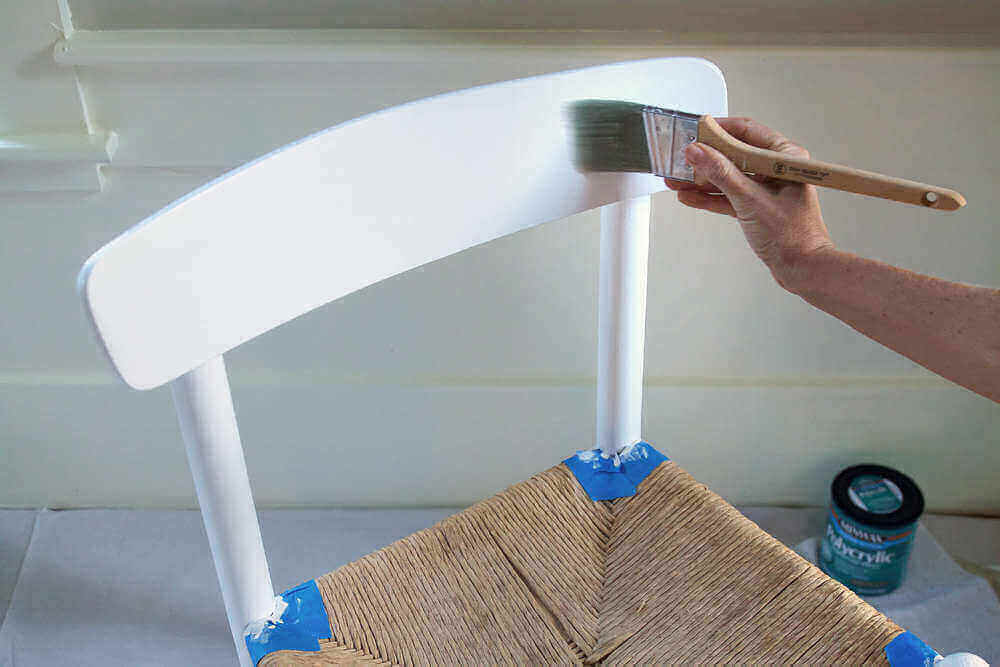Various paint types are formulated differently and labeled for specific surfaces such as walls, furniture, metals, and more.
However, if you have some leftover wall paint around your storage, repurposing it for other DIY applications within your home can be an excellent way to avoid wastage. But, can you use wall paint on wood furniture?
This post explores the options available with regard to using wall paint on furniture. It also provides detailed steps to follow when painting furniture with this class of paint to ensure the desired results.
Can You Paint Furniture With Wall Paint?
Yes, you can paint wood furniture with wall paint even though the coat will not be as durable as furniture paint would be. However, you can apply a primer before the paint to improve adhesion and make the wall paint more durable on your wood furniture.
Refinishing your furniture with wall paint can be a perfect way to utilize any leftover paint sitting around after completing your ceilings and walls painting project.
Instead of letting this paint go to waste, you can use it on old wooden pieces of furniture such as tables, chairs, and cabinets.
Can You Use Interior Paint on Furniture?
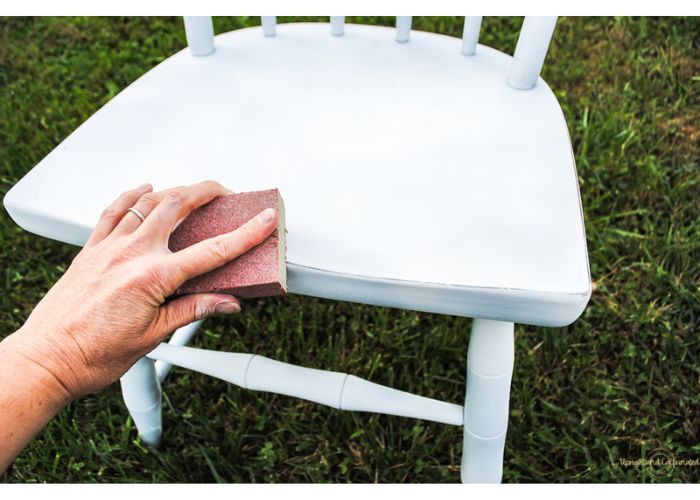
Yes, using interior paint on furniture can be a great way to match your furniture pieces with the walls and ceiling.
You should achieve better results if the leftover product is water-based acrylic or latex paint. These water-based products work better on furniture than their oil-based cousins.
The paint generally sets faster on wood furniture. It also creates a longer-lasting coat that is pretty easy to remove when that becomes necessary or when it is time to refinish the wood differently.
Consider sanding and priming the furniture with a corresponding water-based primer for better adhesion. However, ensure you use the best oil-based exterior primer to refinish metal furniture or exterior wooden surfaces.
What is Furniture Paint?
Furniture paint is paint formulated for use on furniture such as dressers, tables, cabinets, and chairs. In addition, furniture paint can be formulated for interior or exterior applications.
Advantages
- The paint is easy to clean with soap and water.
- Furniture paint is available in a wide range of finishes, from matte to glossy.
Disadvantages
- Not all furniture paint types are washable
What is Wall Paint?
Wall paint is a type of paint formulated specifically to be used on walls. The product contains ingredients that primarily adhere better to cement, mortar, brick, or drywall material.
Advantages
- Wall paint is available in various colors.
- The paint is relatively easy to apply with a paint roller or brush.
Disadvantages
- This type of paint does not stand up well to regular cleaning with soap and water.
Furniture Paint vs Wall Paint
The difference between furniture paint and wall paint is that furniture paint consists of ingredients such as synthetic resin that are missing in wall paint.
However, both paint types are primarily made of polyurethane, unsaturated polyester, and coloring agents. Wall paints are formulated specifically to adhere to cement, brick, mortar, or drywall material.
On the other hand, furniture paint has a formula designed to adhere to interior or exterior wood surfaces.
Interesting read: Can you paint over polyurethane?
Using Wall Paint on Furniture
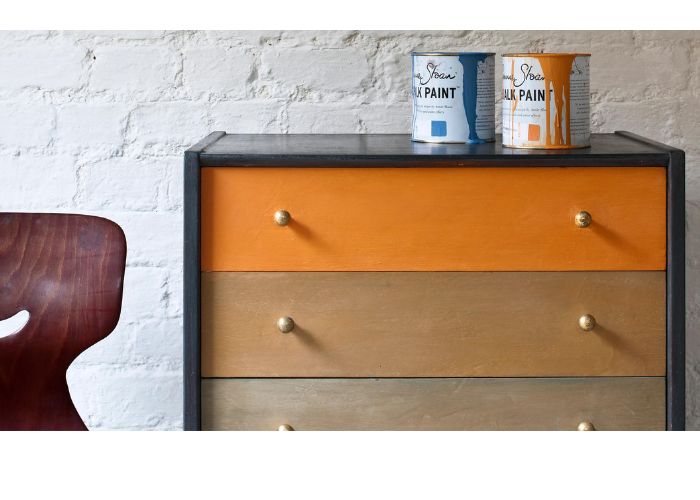
When it is time to refinish your old furniture with a new coat of wall paint, here are the supplies to gather and the steps to follow.
For wall paint on a piece of furniture, it is recommended to work with an old piece of furniture rather than new bare wood.
Tools and materials
- Latex wall paint
- Applicators (Paintbrushes, roller, and optional sprayer for the primer)
- Painters tape
- Paint sealer (optional)
- Sandpapers (60-, 180-, 320-grit)
- Sander (power sander and sanding block for round parts)
- Wood putty
- Trisodium Phosphate cleaner or Krud Kutter
- Cleaning sponge
- Scrapper
- Rags
- Rubber gloves
- Tack cloth
Painting Furniture with Wall Paint (Step-by-Step Process)
After assembling all the things you need, you can begin the process of refinishing your old piece of furniture by following this procedure.
Step 1: Clean the wood furniture
Old wood furniture is likely to have accumulated dirt and grime on its surface. This dirt can significantly hinder adhesion, so
the first step is to remove it.
How you clean the furniture will mainly depend on your preferences and the level of dirt on the surface. For superficial dirt, you can use a damp rag to wipe the wood and clean it out.
However, if the wood has sustained some accumulated layers of dirt and stubborn grime, you may want to use a suitable stain remover to scrub it off.
You could go for Krud Kutter or TSP cleaner, whichever you prefer. Apply the product according to the manufacturer’s instructions, and then rub every inch of the dirty wood surface with a sponge.
Once done, rinse the entire furniture thoroughly and allow it to dry before you proceed to the subsequent steps.
Step 2: Scrape off the old paint
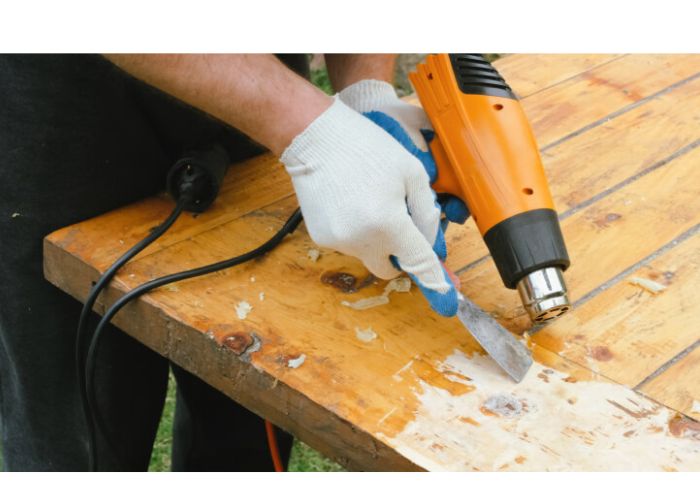
If the furniture has a previous finish or paint on it, it is likely to be chipping off. You need to remove this finish before sanding the old painted furniture.
One way to remove such chipping paint layers is to use a metallic scrapper and meticulously work it across the entire surface. You might not remove all the old wood finish this way, but you will likely remove much of it.
Step 3: Sand it
Once the old finish has come off, you can give the wood the first sanding. In this step, start with a coarse 60 grit sandpaper attached to a power sander and sand the entire surface with gentle, even pressure.
If the furniture has parts that you cannot sand with the power tool, consider using a sanding sponge for such hard-to-reach areas or curves.
This first sanding is intended to remove any surface inconsistencies and not necessarily to smoothen the wood for the new paint. It should also remove any old paint particles and layers remaining on the wood.
Step 3: Cover any cracks with wood putty
Once you are done with the first sanding, touch up the wood with some putty. The old furniture may have nail holes and cracks in the wood.
Use a suitable wood filler to mend these cracks and let them dry. You can always use a putty knife to apply the filler in the areas that need touching up or filling.
The product should come with instructions for use on its packaging. Use these instructions to guide you on the appropriate use of the filler and recommended drying time.
After filling the holes and gaps in the wood, leave it to dry for the amount of time recommended on the packaging. You can also use this time to fix or add nails to any parts that are loose, such as drawer joints and more.
Step 4: Sand the wood again
After the wood filler has dried completely, go over the filled areas with coarse-grit sandpaper to even them out and make them flush with the rest of the wood surface.
Next, use finer 220-grit sandpaper to give the wood a final sanding. You can also switch to 320-grit sandpaper to make the surface ultrafine and smooth.
Ensure you sand the entire surface evenly to ready it for the primer and paint. Do not mix the two; in case you’re asking can you mix paint and primer? Also, ensure the sandpaper passes over the wood and the filled areas to create a uniform appearance across the furniture.
Once you finish sanding, wipe down the wood dust with a tack cloth and let it dry for a brief moment.
Step 5: Scrape off the old paint
Some wall products are blends that contain primer with paint. However, this will not always be the case, so ensure you get a primer and apply it to the furniture before painting it with the wall paint.
Like the paint, a primer can be applied using a brush or roller. However, you should get the best results if you apply it with a paint sprayer.
The spray nozzle helps distribute the primer better, ensuring the best coverage, which eventually reflects in the final outcome. When buying the primer, check with the supplier to ensure it is compatible with your wall paint.
Step 6: Apply the first coat of paint using a brush or roller
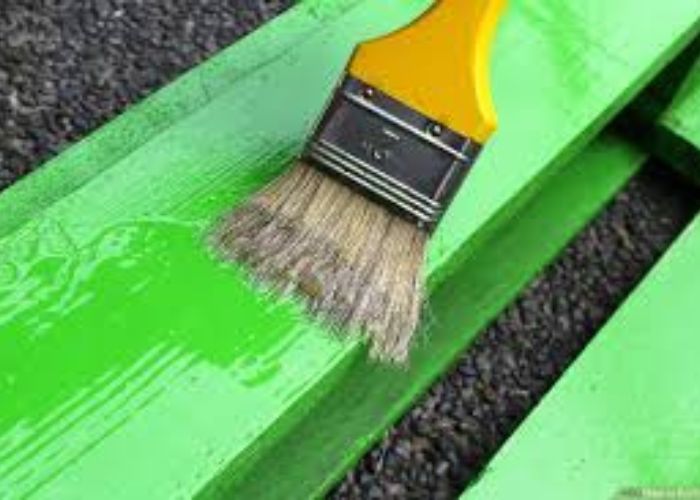
After applying two to three coats of primer and letting them dry completely, you can now apply the paint. You can apply the paint using a foam brush or roller.
For flat furniture surfaces, a high-quality foam roller will give you the best results; then, you can use a foam brush on non-flat areas of the furniture.
These two applicators generally work better than bristle brushes when painting furniture with wall paint. For instance, both foam brushes and rollers help you avoid paint drips or overlapping paint lines in your project.
While at it, ensure you apply the paint along the grain and maintain that direction with all your strokes and paint coats for a uniform, even finish.
Step 7: Lightly sand before the next coat
Allow the first coat of paint to dry completely, and then give the entire surface a quick once over with fine 320-grit sandpaper to smoothen the ridges and texture created while applying the paint.
Adding more layers of paint without sanding can have a textured finish. While sanding, ensure you keep a light hand so you do not dig into the paint but just smoothen the top.
Step 8: Apply additional coats, sanding between them
After sanding, apply additional coats of the paint following the same procedure and technique as the first. Ensure you apply as many coats as recommended on the application instructions.
Following the manufacturer’s recommendations will ensure you get the desired coverage and durability. While at it, ensure you sand between coats and apply thin coats that dry faster rather than thick layers that may take forever to dry.
What is the Best Paint for Wood Furniture?
The best paint good for wood furniture is Rust-Oleum Painters Touch Premium Latex Paint. Thanks to its special formulation, it provides twice the coverage of standard furniture paints.
You can use the paint on wood, plaster, metal, unglazed ceramic, or masonry. The powerful water-based acrylic formula boasts a low odor and offers the best resistance to chipping for long-lasting protection.
Can You Use any Paint to Paint Wood Furniture?
You can paint wood furniture with any paint including your own chalk paint, milk paint, or interior latex paint, but some paint types will not adhere well to the wood if they are not formulated for furniture.
It is best to paint wood furniture with a satin or semi-gloss finish in oil-based or latex paint. Each time, ensure you apply a compatible primer before applying the leftover latex paint for the best results.
If you have old furniture with existing latex paint and want to update its look, you may wonder, “Can you paint over latex paint?” Proper surface preparation is crucial in such cases to ensure successful adhesion and a long-lasting finish.
Before starting the painting process, thoroughly clean the surface, and consider sanding for improved paint adherence. Don’t forget to add a protective clear coat for latex paint for extra durability.
Can You Use Regular Wall Paint on Furniture?
Yes, you can use regular wall paint on furniture. However, ensure you clean the wood, sand it and prime it before applying the paint.
If you have water-based acrylic paint or latex paint, you may get better results on furniture than if the paint is oil-based. Nonetheless, wood paints formulated specifically for furniture will give the best results.
Can Wall Paint be Used on Furniture Summary
So, can you use wall paint on wood? Even though wall paint can work on wood furniture, it is always best to stick to the right product for the job. When painting furniture, you will generally get a better finish and durability with furniture paint.
Nonetheless, if you have leftover paint that might go to waste, consider following the steps and guidelines in this article to paint your wooden furniture with it.
Ensure you prepare the surface properly and apply a primer before painting the wood surface for the best results. Otherwise, you will get into the hustle of removing primer off wood to repeat the same process.

